early
now browsing by tag
antique
beer
blue
ceramic
character
eagle
early
edition
etched
faience
figural
german
germany
gerz
gift
glass
glazed
hand
king
large
lidded
limited
liter
lithophane
made
mettlach
military
munich
oktoberfest
original
painted
pewter
porcelain
rare
regimental
relief
remy
scene
stein
steins
stoneware
tall
tankard
vintage
westerwald
Early Beer Stein Glass Lidded Hand Blown Antique German #XX

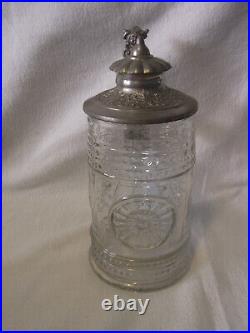
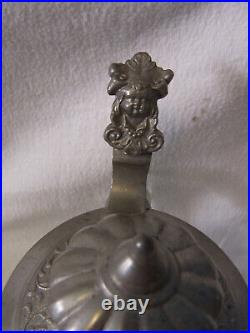
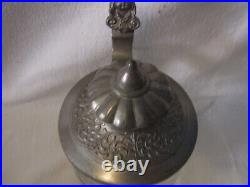
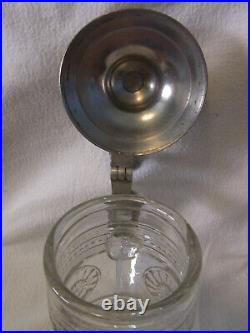
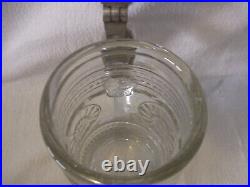
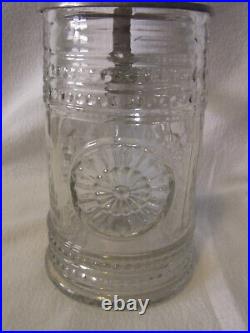
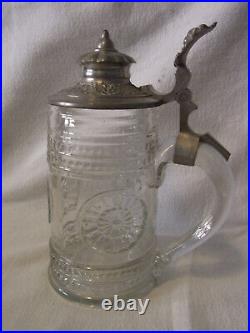


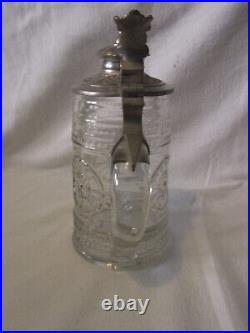
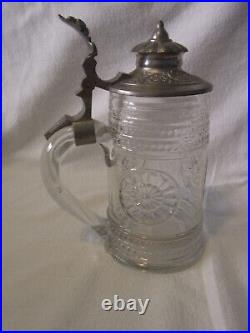
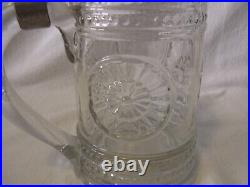
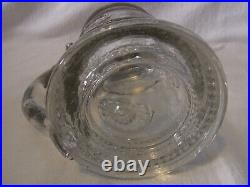
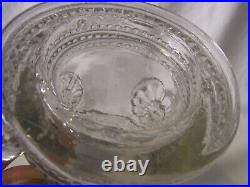

THANKS FOR STOPPING BY. PLEASE VISIT MY OTHER UNIQUE & INTERESTING ITEMS. If you are interested feel free to send an offer. Early Beer Stein Glass Lidded Hand Blown Antique German. Wide 5 7/8 inch. Other Beautiful BEER STEIN you can find here. I found on a estate sale in Nuremberg Germany. Feel free to follow eddys on Facebook. Check out my other items. Be sure to add me to your favorites list. I send my Items over the entire world. All my articles cost dispatch.

Large Antique Early German Beer Stein Muskau Tullenkanne Spouted Pitcher c. 1820s

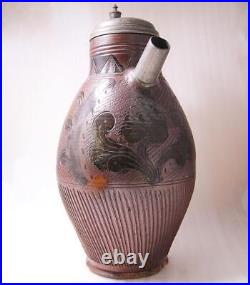
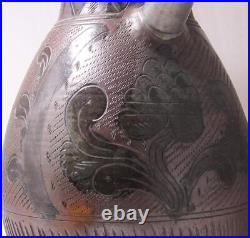
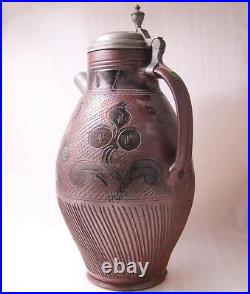

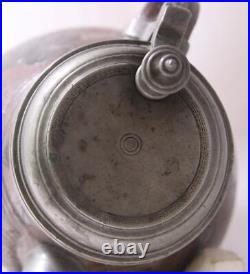
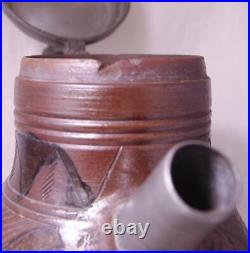

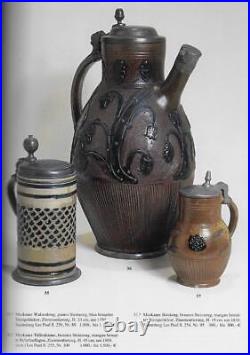

Large Antique Early German Beer Stein Muskau Tullenkanne Spouted Pitcher c. Description: The beer steins made before 1800 are quite rare – at that time, before the industrial revolution, the production was all manual. Every stein made in the early period was unique, decorated by hand and rarely replicated. The stein presented is a pouring stein made with a spout – the pouring beer vessels of this type were called “Tuellenkanne” or “spouted pitcher” in Germany. It was made in early 1800s, around 1820s, it is guaranteed old give or take 10 years. It was made in the town of Muskau – on the very East of Germany at the border with Poland. This brown-glazed stoneware was very popular during the first half of 1800s. The Muskau factory produced them in large quantities in all kinds of sizes. The larger pouring steins were usually exported to Hungary, Bohemia and Austria, where they were called “Prague jugs” since they were transported and distributed through Prague. This one is quite large – it stands 16 tall and holds 5 liters of brew. The lid is made of pewter with the urn-shaped thumblift typical for early 1800s. The spout is made of pewter as well. The stein is in a good shape – a very rare condition for a ceramics piece about 200 years old. There are some minimal chips on the bottom of the stein, unavoidable in the stoneware item this old. There is also a small chip on the upper rim under the lid. There are no major chips, no cracks or even hairline. This is a very good condition for a beer drinking vessel this old. It is very large and quite impressive, standing 16 tall with the capacity of 5 liters. I guarantee the authenticity and my description. This is a true museum quality and rarity antique beer drinking vessel about 200 years old! Condition: Very good – see description. Get Supersized Images & Free Image Hosting. Attention Sellers – Get Templates Image Hosting, Scheduling at Auctiva. Com. Track Page Views With.

Antique Early German Brown Earthenware Beer Stein Birnkrug Bunzlau c. 1780s

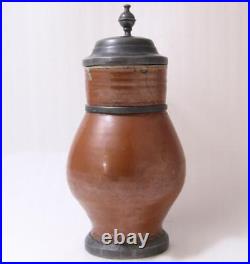
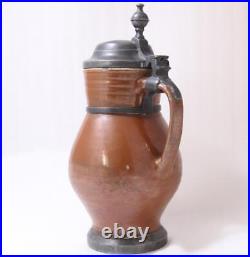
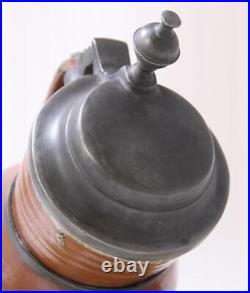

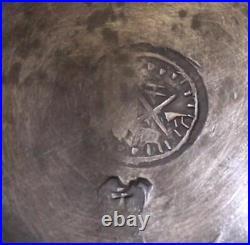
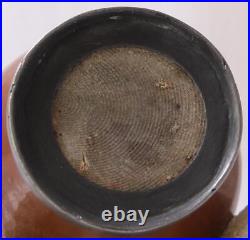

Antique Early German Brown Earthenware Beer Stein Birnkrug Bunzlau c. Description: In the next few days I will be posting a small collection of three very similar Bunzlau beer steins that differ only in size. This one is the smaller one but still quite large. Presented is a rare example of early German pottery made around the late-1700s. This high-fired earthenware brown-glazed beer stein was made in Bunzlau – a town in Lower Silesia. In fact, all the pottery production from small towns in Lower Silesia is called “Bunzlau” – there are no distinctive features to differentiate them. Every German region (and almost every town) that was known to make pottery had its own unique technologies and trade secrets. That’s why we can determine where a particular piece was made based on the appearance, style, and type of the pottery. The steins of this kind were called “Birnkruge” or “Pear-shaped steins” because of their pear-like shape They are glazed with glossy lead-based chocolate-brown glaze that was typical (and unique) for Bunzlau. The pewter lid is dome-shaped with a hollow ball thumblift. The pewter foot ring was intended to support the pedestal from chipping, the neck ring supports the neck and is very typical for Bunzlau Birnkruge. The lid is stamped with pewterer hallmarks but they are too illegible to be recognized. The stein is large and impressive – it stands 11 tall to the top of the thumblift, with approx. Over 1.5 Liter capacity. A very similar but smaller stein is featured in Gary Kirsner’s “The Beer Stein Book” on page 40 pic. The stein is in almost excellent condition, and the appearance is great. There is a small crack in the neck that is secured by the net ring. Otherwise there are no cracks or chips or any other repairs. Some age-related glaze and pewter wear only. It is very impressive and elegant and a true historical piece that carries almost 250 years of both culture and technology. Condition: Excellent with a small crack at the neck secured by the neck ring. Get Supersized Images & Free Image Hosting. Attention Sellers – Get Templates Image Hosting, Scheduling at Auctiva. Com. Track Page Views With.

Antique Large Early German Brown Earthenware Beer Stein Birnkrug Bunzlau c. 1780s

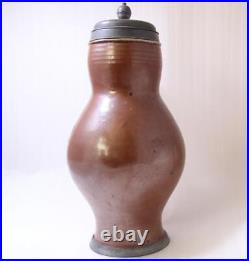
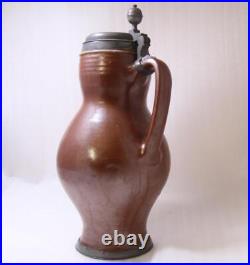
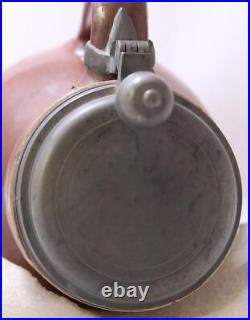
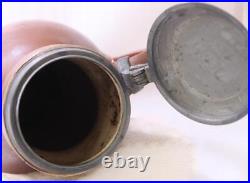
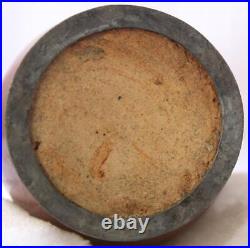

Antique Large Early German Brown Earthenware Beer Stein Birnkrug Bunzlau c. Description: This is the fourth of the small collection of Bunzlau steins I post – it is the largest by far. Presented is a rare example of early German pottery made around the late-1700s. This high-fired earthenware brown-glazed beer stein was made in Bunzlau – a town in Lower Silesia. In fact, all the pottery production from small towns in Lower Silesia is called “Bunzlau” – there are no distinctive features to differentiate them. Every German region (and almost every town) that was known to make pottery had its own unique technologies and trade secrets. That’s why we can determine where a particular piece was made based on the appearance, style, and type of the pottery. The steins of this kind were called “Birnkruge” or “Pear-shaped steins” because of their pear-like shape They are glazed with glossy lead-based chocolate-brown glaze that was typical (and unique) for Bunzlau. The pewter lid is dome-shaped with a hollow ball thumblift. The pewter foot and lip rings were intended to support the pedestal and the neck from chipping and cracking. The stein is very large and impressive – it stands 15 tall to the top of the thumblift, with a 3L capacity. A very similar but smaller stein is featured in Gary Kirsner’s “The Beer Stein Book” on page 40 pic. The stein is in excellent condition, and the appearance is great. There is no cracks or chips or any other repairs. Some age-related glaze and pewter wear only. You can see some glaze crazing on the inside but it is not cracks since they don’t show on the outside. It is very impressive and elegant and a true historical piece that carries almost 250 years of both culture and technology. Please check my store. Condition: Excellent with a small crack at the neck secured by the neck ring. Get images that make Supersized seem small. Track Page Views With.

Early 19th century DEER Hunter Handcut Glass Beer Stein MUG Tankard Biedermeier

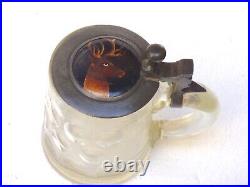
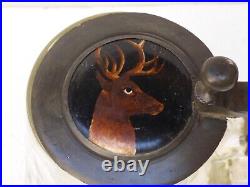
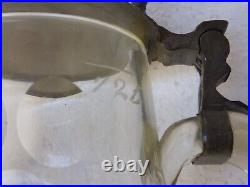
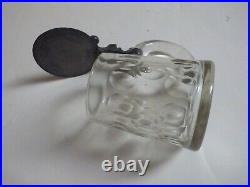
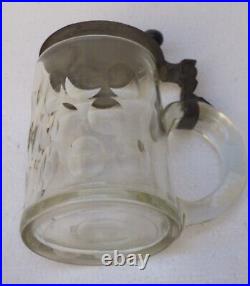
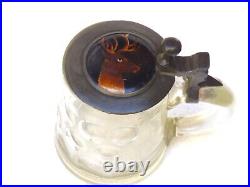
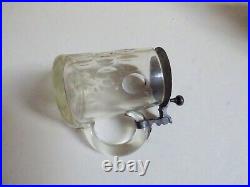
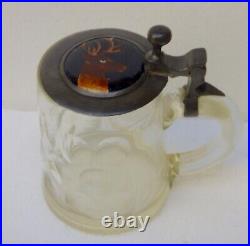

Early 19th century DEER Hunter Handcut Glass Beer Stein MUG Tankard Biedermeier. Rare german Biedermeier 1. /2 liter tapered handcut glass stein with a pewter lid and a hand painted porcelain insert showing the head of a Deer. It is 6 2/5 to the top of the pewter thumb-lift of the lid it is etched with the. Very good used condition with no chips or cracks, slight play in lid. Extremely hard to find and a. And feel free to ask for any details. Pour toute question supplémentaire – N’hesitez pas à me contacter! All Sales are Final. _gsrx_vers_1547 GS 9.4.2 (1547).

Antique Very Early German Stoneware Beer Stein Rheinland Siegburg c. 1500s

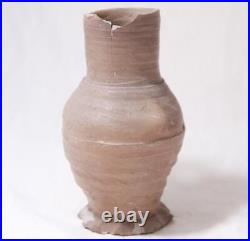


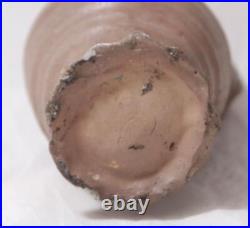
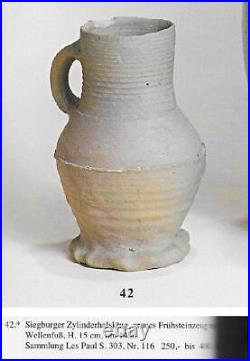
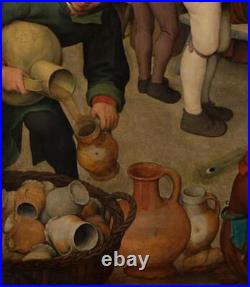

Antique Very Early Saltglazed Stoneware Beer Stein – Rheinland Siegburg c. Description: I will be posting this week several very early German beer steins. They date back to 1400s – 1600s and were made in the “Rhineland” – the region in Germany by the river Rhine where traditionally the early stoneware production took place. The most important towns to produce the stoneware were Cologne, Siegburg, Frechen, and Raeren. This simple but very elegant beer stein is very old. It dates back to the late-1400s – early-1500s and was made in Rheinland – most likely in the town of Siegburg – one of the German oldest and productive pottery centers. The beginning of pottery production go back to 12th century. It was in 14th century when a transition from earthenware and proto-stoneware took place, culminating in fully vitrified stoneware by the end of the 15th century. The salt glaze was successfully used throughout the 16th century. The stein presented is made of light brown unglqazed stoneware with no decorations. The stein is in a fair condition for this kind of beer vessels. There is a hairline at the neck and some chipping at the upper rim and foot. No significant losses, no restorations. This is a beautiful piece with several centuries behind it! I guarantee my description and my dating. Also, I’ve found a very similar stoneware jugs in Peter Breugel the Elder painting “Peasant Wedding” from 1567. Some are slightly different, some are exactly the same. Please take a look at my pics! The stein is 6.5 tall, approx. 0.5 L capacity. Height: 6.5 in. Get Supersized Images & Free Image Hosting. Attention Sellers – Get Templates Image Hosting, Scheduling at Auctiva. Com. Track Page Views With.

Large Antique Early German Beer Stein Muskau Tullenkanne Spouted Pitcher c. 1820s

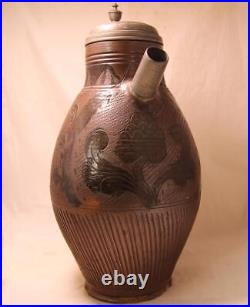
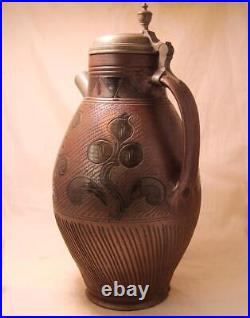
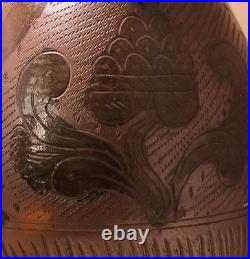
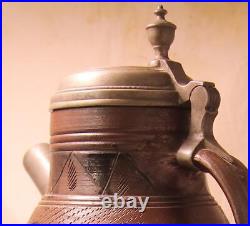
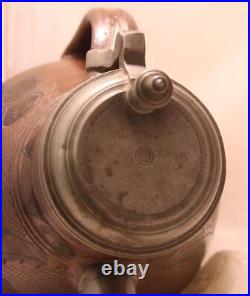
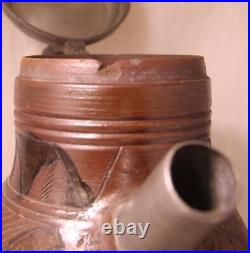
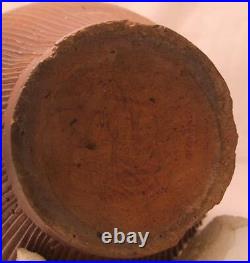

Large Antique Early German Beer Stein Muskau Tullenkanne Spouted Pitcher c. Description: The beer steins made before 1800 are quite rare – at that time, before the industrial revolution, the production was all manual. Every stein made in the early period was unique, decorated by hand and rarely replicated. The stein presented is a pouring stein made with a spout – the pouring beer vessels of this type were called “Tuellenkanne” or “spouted pitcher” in Germany. It was made in early 1800s, around 1820s, it is guaranteed old give or take 10 years. It was made in the town of Muskau – on the very East of Germany at the border with Poland. This brown-glazed stoneware was very popular during the first half of 1800s. The Muskau factory produced them in large quantities in all kinds of sizes. The larger pouring steins were usually exported to Hungary, Bohemia and Austria, where they were called “Prague jugs” since they were transported and distributed through Prague. This one is quite large – it stands 16 tall and holds 5 liters of brew. The lid is made of pewter with the urn-shaped thumblift typical for early 1800s. The spout is made of pewter as well. The stein is in a good shape – a very rare condition for a ceramics piece about 200 years old. There are some minimal chips on the bottom of the stein, unavoidable in the stoneware item this old. There is also a small chip on the upper rim under the lid. There are no major chips, no cracks or even hairline. This is a very good condition for a beer drinking vessel this old. It is very large and quite impressive, standing 16 tall with the capacity of 5 liters. I guarantee the authenticity and my description. This is a true museum quality and rarity antique beer drinking vessel over 200 years old! Condition: Very good – see description. Get Supersized Images & Free Image Hosting. Attention Sellers – Get Templates Image Hosting, Scheduling at Auctiva. Com. Track Page Views With.

Larger Antique Early German Westerwald Stoneware Beer Stein Walzenkrug c. 1790s

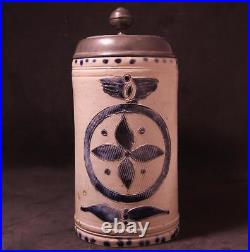
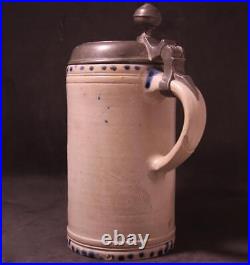
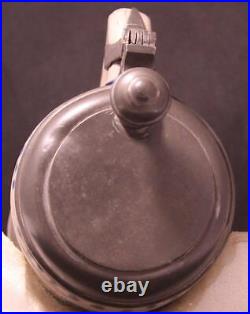


Larger Antique Early German Westerwald Stoneware Beer Stein Walzenkrug Incised c. Description: The beer steins made before 1800 are quite rare – at that time, before the industrial revolution, the production was all manual. Every stein made in the early period was unique, decorated by hand and rarely replicated. This beautiful stein was made in the late 1700s, around 1780s – 1790s, it is guaranteed old give or take 10 years. It is made in a very traditional style of gray stoneware with cobalt-blue glaze. This is a very traditional beer drinking vessel called “Walzenkrug” or “Cylindrical” stein – a type that was produced for over centuries, from the mid-1600s to the mid-1800s. The production of saltglazed stoneware beer steins in the Westerwald region of Germany reached the highest quality by the mid-18th century. The center of the stein shows a circular design with a four-point star in the middle. The decorations are incised into the wet clay with a sharp instrument, glazed with cobalt-blue glaze, fired and saltglazed. The lid is pewter with hollow ball thumblift and large 5-ring closed type hinge. The stein is in excellent shape – there are no cracks or repairs whatsoever. There are some minor flakes on the bottom edge – that’s can be seen as age-related wear. The stein is larger than usual – it is 10 tall to the top of the thumblift, 1.5L capacity. I guarantee the authenticity. Condition: Excellent w/some minor flakes on bottom edge. Get Supersized Images & Free Image Hosting. Attention Sellers – Get Templates Image Hosting, Scheduling at Auctiva. Com. Track Page Views With. The decorations are incised into the wet clay with a sharp instrument, glazed with cobalt-blue glaze.


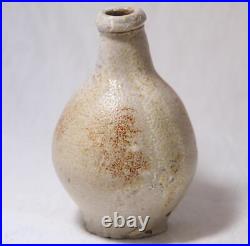
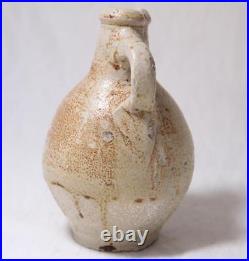
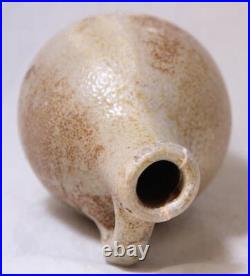
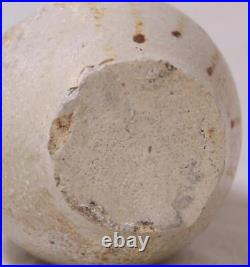
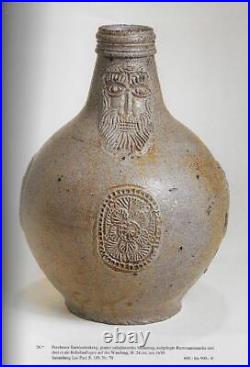
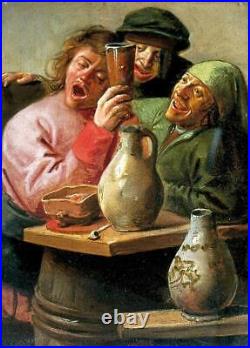

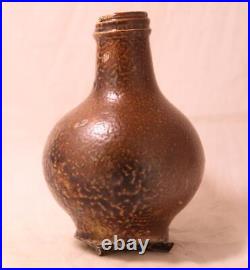
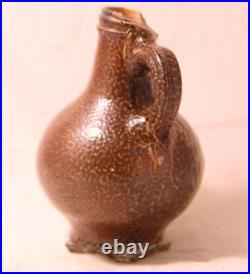
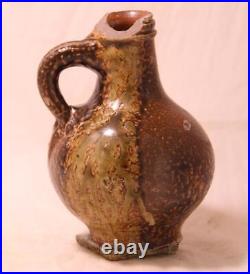
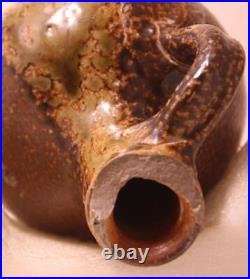
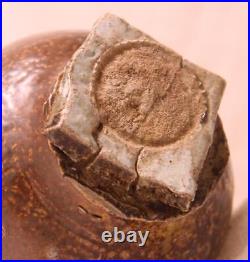
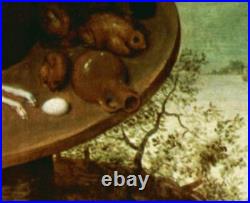
 D5 Creation
D5 Creation